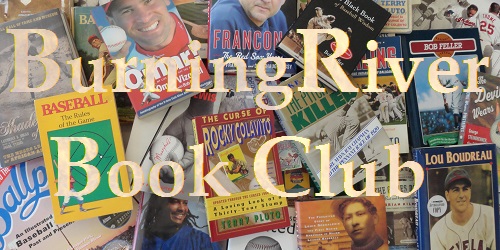Before going in depth on Jeff Passan’s insightful book about baseball’s Tommy John problem, there’s an anecdote that it reminded me of from the very start. I once went to a movie that I thought would be funny as I’m a fan of Amy Schumer and LeBron James and in the middle of the movie, knee surgery broke out. Whether you enjoyed Train Wreck or not is besides the point that watching someone hammer another human’s joint is at least slightly disconcerting. The Arm opens with a similar scene as Passan takes you inside the operating room for Todd Coffey‘s second Tommy John surgery.
This extremely detailed look at what actual happens during a UCL repair/replacement was a complete necessity for a book of this subject matter, but maybe he could have given the reader a bit of a heads up. If you haven’t read it yet, I just did as much for you.
[protected-iframe id=”f94957143a84e5741c9e2f306613d3eb-114320562-107853376″ info=”//ws-na.amazon-adsystem.com/widgets/q?_encoding=UTF8&ASIN=0062400371&Format=_SL250_&ID=AsinImage&MarketPlace=US&ServiceVersion=20070822&WS=1&tag=burnin09-20″ ]
Beyond that warning of semi-graphic content, this is an excellent book. When breaking baseball books down into categories, there are generally historical pieces, instructional books and analytical books. The Arm is all three. While it isn’t set up in that order, Passan covers the history of elbow injuries and Tommy John surgery, the various ways of potentially avoiding elbow injuries and an attempt to try to figure out why elbow injuries have occurred at an increased rate despite great attempts to avoid them.
The book is a bit disjointed, with the stories of Daniel Hudson and Todd Coffey interspersed throughout the regular content. Both players had very different, yet similar situations and their stories are an important anecdotal aspect of the history of Tommy John, but almost felt like they should have been separate from the rest of the book.
While Hudson and Coffey may have been the heart and soul of the book and are used for the regular fan to feel empathy for the many pitchers who go through Tommy John and the year of rehab every season, the most interesting sections of the book are the long look into Japanese youth baseball and the insight into Driveline.
Too often we get caught up in myopic self loathing when the problem is a lot more universal than that. Passan’s effort into finding some of the most pivotal characters in Japanese baseball is extremely appreciated. The fact is, if you really want to know about Hudson or Coffey’s success, you can look them up on Baseball Reference. If you want to know about the inside of yakyu, you have to go to Japan and talk to people. The same is true about the inside of the Perfect Game tournament, which Passan also covers in depth.
While most of the book is about baseball in general, there is a focus on certain teams, particularly the Diamondbacks early on and the Indians in the end. Driveline Baseball and Trevor Bauer appear inseparable and even those who hate the polarizing Bauer may learn to understand him a little better if they read his story. Another Indian (now former), Casey Weathers, is used in the book as the anecdotal evidence for Driveline’s success much in the way that Hudson is used to describe the journey of Tommy John. How Weathers went from injured, to healthy and from 90 to 105 MPH is very useful information. That Weathers was unable to have enough success in reality (he was cut after the 2016 season and is currently playing in independent ball) is another important lesson.
One thing the Arm doesn’t have is the answer. There are some stats about which types of pitchers are more likely to get injured (like those who throw incredibly hard or all year long), but even those who are protected by the old standards (like Stephen Strasburg and Noah Syndergaard) still have had major injury issues. The point of the Arm isn’t to fix the problem, but to highlight it. This is the purpose of the anecdotal evidence, to understand the hopelessness and desperation of getting and returning from Tommy John. It is also a plea to Major League Baseball and youth baseball across the world to research this subject aggressively until some real answers can be found.
[protected-iframe id=”fe81289f7a0bc9b7c3eeeff7828357bc-114320562-107853376″ info=”//ws-na.amazon-adsystem.com/widgets/q?ServiceVersion=20070822&OneJS=1&Operation=GetAdHtml&MarketPlace=US&source=ss&ref=as_ss_li_til&ad_type=product_link&tracking_id=burnin09-20&marketplace=amazon®ion=US&placement=0062400371&asins=0062400371&linkId=eccfe4dd98498b9daaf1355ea5fa3811&show_border=true&link_opens_in_new_window=true” frameborder=”0″ style=”width:120px;height:240px;” scrolling=”no”]Add The Sports Daily to your Google News Feed!
